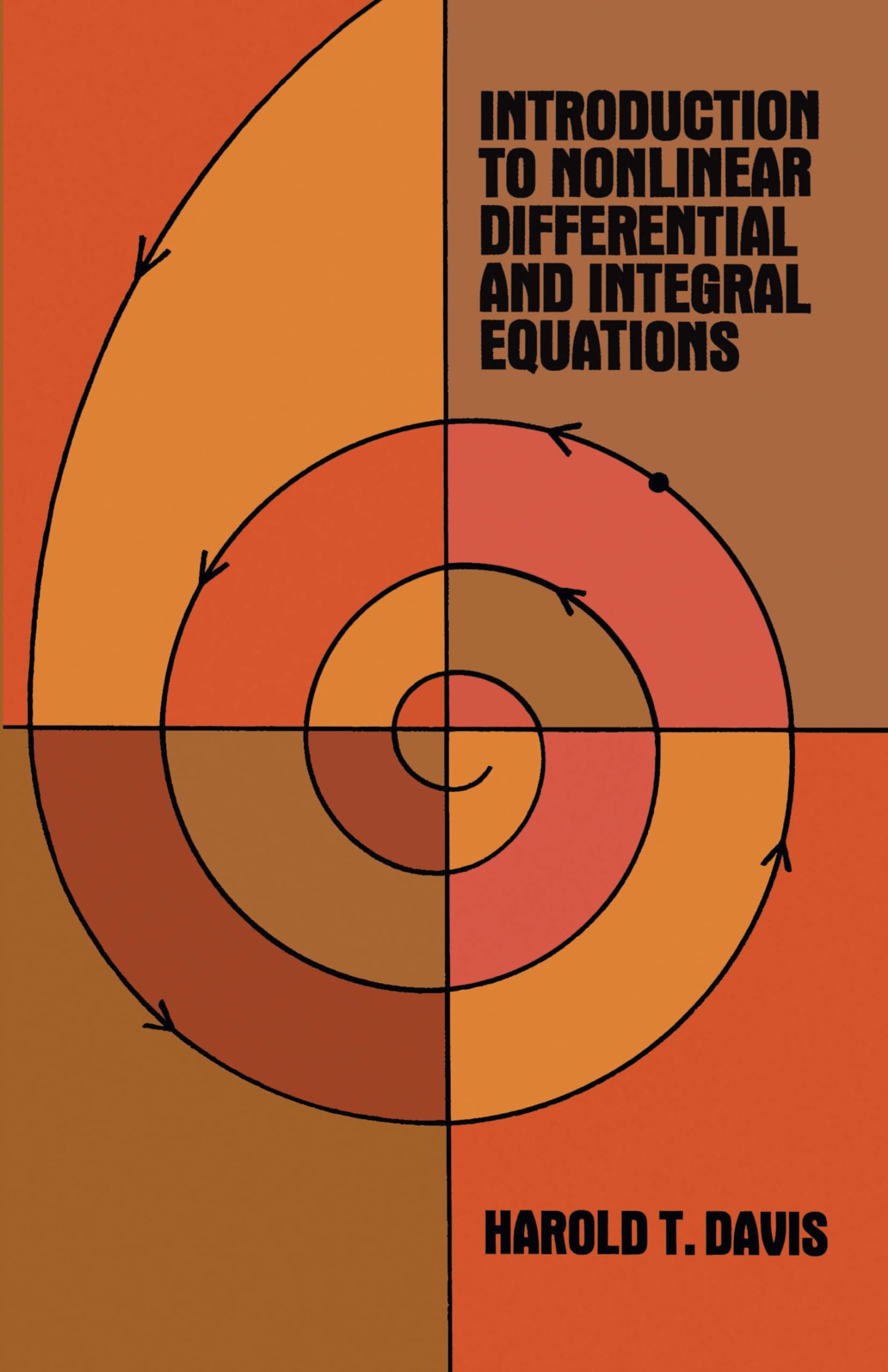

Introduction to Nonlinear Differential and Integral Equations (Dover Books on Mathematics)
B**B
Great
Great
C**H
a very nice book
The book arrives promptly and is in very good condition.
R**K
Beautifully written book
Beautifully written book. The first chapter gives a taste of some of the solution techniques of some ODE's, and the rest is working on those techniques. The entire book is devoted to a motivating writing style in the sense that you are introduced to a concept or an idea in a very general sense, you get some background, a little history, names of the mathematicians that worked on it, and then the following sections show how the solutions came to be. I could not ask for more.
A**T
Encompassing
Comprehensive and thorough.
F**E
Great book for nonlinear equations!
Dover does it again! I would recommend just about any Dover book on physics or mathematics and this one is high on my list!
W**H
A Good Primer and Reference
Excellent tools for working first and second order NL systems
V**R
Brillant treatment of nonlinear differential and integral equations
This book contains a superb treatment of the classical theories of nonlinear equations including integral equations of the Volterra type. It was written in 1960, when the use of computers to solve differential equations and dynamical systems was in its infancy and the book is of course dated in this aspect. However, the book is a true treasure and is worth reading for its thorough and comprehensive treatment, including an introduction to the concept and usefulness of the phase space. It is bad that it is hard to get nowadays, but it is worth trying to get it used.
F**N
Ahead of its Time
This book appeared a full generation before Gleick's classic popularization, "Chaos." It is easy to read, as math books go, and full of examples well worth studying for both practical and theoretical questions. Like many Dover reprints, it is a fantastic value. However, the only applications of CAC (continuous analytic continuation) you might find are some papers by D. Hartwell on orbits. An equally precise, but more versatile method is Picard-Chebyshev, but it has yet to develop a significant following. For references, see the New Preface in the Product Link. If amazon.com ever gets its "Shorts" program up and running again, I'll offer some of the examples from this classic work as Excel spreadsheets with VBA macros. Yes, you can do a lot of nonlinear dynamics with Excel because the secret is to use a small set of optimal variables rather than a large set of unstable ones. The Art of Modeling Dynamic Systems: Forecasting for Chaos, Randomness and Determinism (Dover Books on Mathematics)
C**2
Bad printing, bad packing
The contents of the book makes a good impression. Of course I couldn't work it through in the short time. But the first steps are promising. However there are two things that bother me greatly: First the text on the pages is badly positioned which means the upper margin on the pages is too small, the lower too large. Or, the text was properly placed but when cutting the etches of the paperback the book was unprecisely positioned. This is more probable because I have to separate many pages at the lower edge manually with a thin knive. Secondly the book was badly packed which resulted in a buckled corner (book flew around in a too big package. Sending the book back is out of question because the postage to here and back costs more than the book.
Trustpilot
3 weeks ago
2 weeks ago